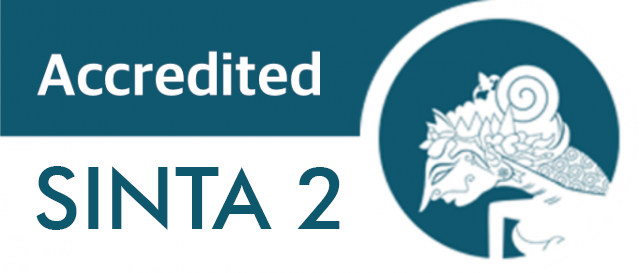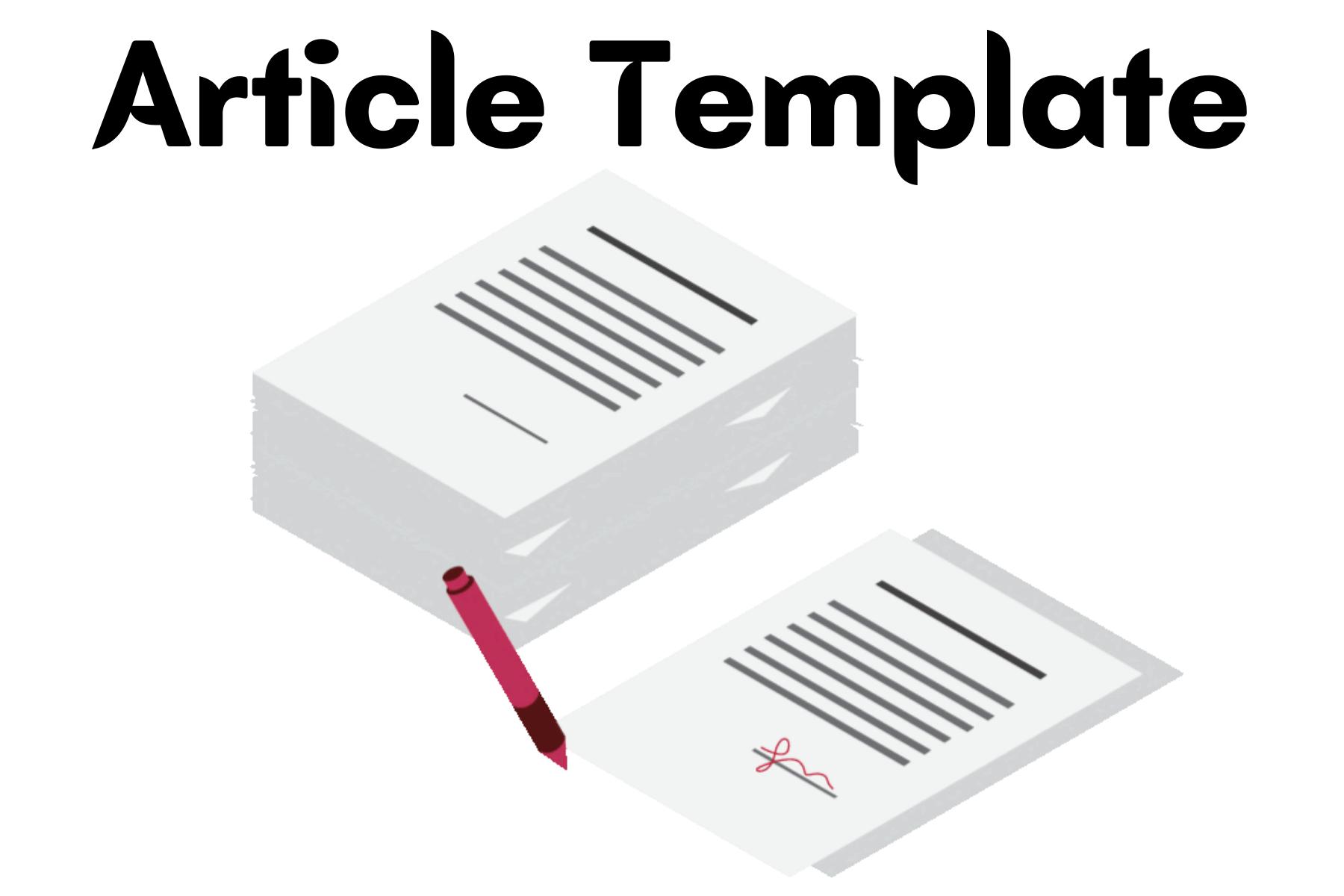Analysis of Mathematical Connection Ability Through Project Asesmen Sumatif Akhir Jenjang (ASAJ) in Junior High School
DOI:
https://doi.org/10.18326/hipotenusa.v6i2.2197Kata Kunci:
asaj, mathematical connection ability, project 3rAbstrak
This study aims to assess students' ability to link mathematical concepts with recycling projects through the implementation of an end-of-level summative assessment (ASAJ). The recycling project was chosen as the final assessment to enrich students' experience through direct application to real-world situations. This type of research is descriptive with a qualitative approach. The subjects in this study were four groups selected based on the criteria determined by the researcher. The data collection techniques used were documentation in the form of student reports and interviews with teachers and students. This assessment is the final assessment of project-based ninth grade students with the theme of 3R (reuse, reduce, recycle). The results showed that students can process used goods or waste that is difficult to decompose into goods that have selling value. In addition, the implementation of this assessment shows that students are not only able to identify and apply mathematical patterns and concepts in this project but also use mathematical calculations and data to make relevant decisions during the project process. This ability can be seen in how students connect mathematical theories with practical contexts such as scale calculations and social arithmetic. This research is expected to be an illustration for schools or teachers who want to implement project-based learning and assessment in addition to providing a more contextual and applicable learning experience, especially for the surrounding environment.
Referensi
Addin, I., Redjeki, T., & S. R. D., A. (2014). Penerapan model pembelajaran project based learning (PjBL) pada materi pokok larutan asam dan basa di kelas XI IPA 1 SMA Negeri 2 karanganyar tahun ajaran 2013/2014. Jurnal.
Agustian S, S., Safitri, M. D., & Fauzia, A. (2020). Dissemination of Reduction in Use of Plastic Straws in Schools and Communities. Jurnal Pengabdian Masyarakat MIPA dan Pendidikan MIPA, 122-130.
Anthony, G., & Walshaw, M. (2009). Characteristics of Effective Teaching of Mathematics: A View from the West. Journal of Mathematics Education.
Busyairi, M., Sarwono, E., & Priharyati, A. (2018). Pemanfaatan Alumunium dari Limbah Kaleng Bekas sebagai Bahan Baku Koagulan untuk Pengolahan Air Asam Tambang. Jurnal Sains dan Teknologi Lingkungan.
Creswell, J. (2019). Reseach Design (Pendekatan Metode Kualitatif, Kuantitatif, dan Campuran). Yogyakarta: Pustaka Pelajar.
Dewi, M. R. (2023). Advantages and disadvantages of project-based learning for strengthening the Profil Pelajar Pancasila Kurikulum Merdeka. Inovasi Kurikulum, 213-226.
Earl, L. (2006). Assessment - a powerful lever for learning. Brock Education.
Elina V. (2020). Teachers’ perspective on project-based learning in mathematics and science
Graven, M., & Venkat, H. (2007). Emerging pedagogic agendas in the teaching of Mathematical Literacy. African Journal of Research in Mathematics, Science and Technology Education, African Journal of Research in Mathematics Science and Technology Education.
Haines, C. R. (1991). Assessing mathematical science projects. International Journal of Mathematical Education in Science and Technology, 22(1), 97–101. https://doi.org/10.1080/0020739910220114
Hendrawan, A., & Najib, U. (2019). Pemanfaatan Limbah Botol Plastik untuk dijadikan Produk Aksesoris Fesyen. Jurnal ATRAT.
Kafah, A., Efianingrum, A., Kholifah, L., Pangestu, A., & Ujang Sugara. (2024). Teaching at the Right Level-based Project-based Learning on Mathematical Connections of Fourth Grade Elementary School Students. International Journal of Elementary Education, 8(2), 314–323. https://doi.org/10.23887/ijee.v8i2.73250
Kenedi, A. K., & Nelliarti. (2019). Peningkatan kemampuan koneksi matematis siswa Sekolah Dasar melalui model Project Based Learning. Pros. SemNas. Peningkatan Mutu Pendidikan.
Koskinen, R., & Pitkaniemi, H. (2022). Meaningful Learning in Mathematics: A Research Synthesis of Teaching Approaches. International Electronic Journal of Mathematics Education.
Lismarika, R. (2021, Februari 21). model pembelajaran projek based learning (pjbl) dalam pembuatan manisan pada mapel prakarya jenjang smp. Retrieved from LPMP Aceh: http://lpmpaceh.kemdikbud.go.id/
Madusise, S., & Mwakapenda, W. (2014). Using School Mathematics to Understand Cultural Activities: How Far Can We Go? Mediterranean Journal of Social Sciences, 146–157.
Markula, A., & Aksela, M. (2022). The key characteristics of project-based learning: how teachers implement projects in K-12 science education. Disciplinary and Interdisciplinary Science Education Research, 4(1). https://doi.org/10.1186/s43031-021-00042-x
Mazaya, M. Y., Montero, C. S., & Casmir, R. O. (2019). I am investigating Students’ Attitudes towards Learning Mathematics. INTERNATIONAL ELECTRONIC JOURNAL OF MATHEMATICS EDUCATION, e-ISSN: 1306-3030. 2019, Vol. 14, No. 1, 207-231 .
Nabila, I. D. (2017). Pemanfaatan Limbah Sendok Plastik untuk Diaplikasikan sebagai Produk Perhiasan. E-Proceeding of Art & Design, 1009.
Nayanathara Thathsarani Pilapitiya, P. G. C., & Ratnayake, A. S. (2024). The world of plastic waste: A review. In Cleaner Materials (Vol. 11). Elsevier Ltd. https://doi.org/10.1016/j.clema.2024.100220
NCTM. (2000). Principles and Standards For School Mathematics/ NCTM. New York: National Council of Teachers of Mathematics.
Nizaar, M., Sukirno, Djukri, Muhardini, S., & Mas’ad. (2020). Improving students’ environmental awareness using 3R principles. Universal Journal of Educational Research, 8(11B), 6146–6151. https://doi.org/10.13189/ujer.2020.082251
Novianti, B A P, M., & N, P. (2019). Mathematical connection ability of middle school students in solving quadrilateral. International Conference on Mathematics and Science Education.
Pambudi, D. S., Budayasa, I. K., & Lukito, A. (2020). The Role of Mathematical Connections in Mathematical Problem Solving. Mathematics Education Journal, 14(2), 129–144. https://doi.org/10.22342/jpm.14.2.10985.129-144
Pentang, J. (2021). Impact Assessment and Clients’ Feedback towards MATHEMATICS Project Implementation. International Journal of Educational Management and Development Studies, 1(1), 90–103. https://doi.org/10.53378/346107
Rohmatilah, L. (2022). Analisis Kemampuan Literasi dan Numerasi Siswa Kelas V dalam Pelaksanaan Asesmen Kompetensi Minimum (AKM) di SD Negeri 1 Bumirejo Tahun Ajaran 2021/2022. Surakarta: Universita Sebelas Maret.
Stiggins, R., Arter, J., Chappuis, J., & Chappuis, S. (2007). Classroom Assessment for Student Learning. New Jersey: Pearson Education.
Suurtamm, C., Thompson, D. R., Young, R., Leonora, K. ·, Moreno, D., Sayac, N., Schukajlow, S., Silver, E., Ufer, S., & Vos, P. (2016). Assessment in Mathematics Education ICME-13 Topical Surveys Large-Scale Assessment and Classroom Assessment. http://www.springer.com/series/14352
Wagino, W., & Andriani, A. (2021). Analysis of Mathematical Connection Skills Using Realistic Mathematical Education. Indo-MathEdu Intellectuals Journal, 2(2), 83–91. https://doi.org/10.54373/imeij.v2i2.20
Yılmaz, Ç., Altun, S. A., & Olkun, S. (2010). Factors affecting students’ attitude towards Math: ABC theory and its reflection on practice. Procedia - Social and Behavioral Sciences, 2(2), 4502–4506. https://doi.org/10.1016/j.sbspro.2010.03.720
Unduhan
Diterbitkan
Cara Mengutip
Terbitan
Bagian
Lisensi
Hak Cipta (c) 2024 Rinna Sabriena, Kana Hidayati

Artikel ini berlisensiCreative Commons Attribution-NonCommercial-ShareAlike 4.0 International License.

This work is licensed under a Creative Commons Attribution-ShareAlike 4.0 International License.


